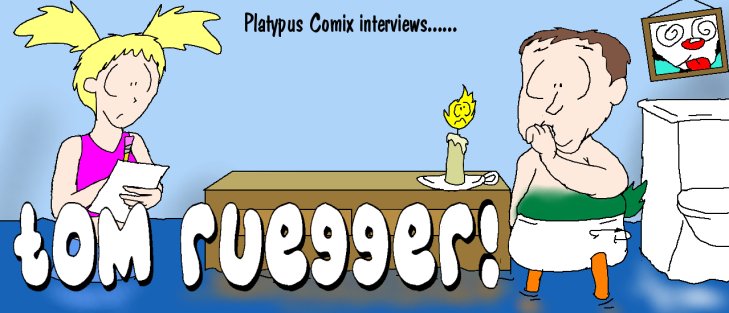

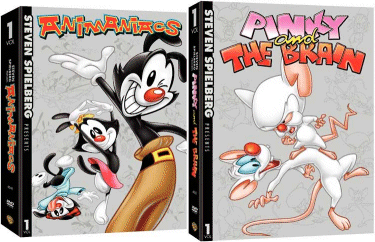 |
It seemed appropriate to release part
II of the Epic Tom Ruegger Interview on the eve of the
release of two of the most Epic DVD Sets Ever. Mark July
25th on your calendars and support your local siblings! A man skipped these DVDs in Nairobi, and was trampled by angry dik-diks. A man in Wisconsin purchased both, and later won five free minutes of shopping at the Piggly-Wiggly. |
But unpaid endorsements aside, I last left Tom Ruegger as he was about to tell the tale of Tiny Toons' formation. However, since he revealed he was once Hanna-Barbera's Scooby Doo guy in part one, I just had to add in one more thing.....
.....I couldn't resist asking this......
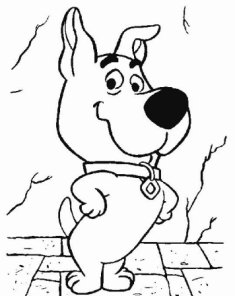
What do you think of Scrappy??
I became the story editor on Scooby somewhere around 1984, I think. It might seem strange but when I was given the job, I had never watched the series. I was a little too old for it when it first premiered in 1969, and I had never caught up with it. Never cared much about it, either. Suddenly, I was the story editor of this fairly important property, and I immediately began to bone up on the various incarnations.
I really immersed myself in Scooby for about a month. For me, the key to writing a good script and to making a good show is that, on a personal level, I need to love the characters. Care about 'em. Want good things for them. Make them look good. Show their dimensions and make them likeable. So, once I started to love the characters, I felt comfortable writing for them.
It's a lot easier to love Scooby than it is to love Scrappy. But I don't have the problem with Scrappy that I have heard expressed by others. I suspect this is because I wasn't watching Scooby from the beginning, but rather, I came in and started catching up quite a while (a couple of years) after Scrappy had made his debut. Hey, they'd been messing with Scooby's cast for years! Scooby Dum. All those nasty celebrity cameo Scooby movies. I dislike those things more than I dislike Scrappy. And, for what it's worth, at least Scrappy brings some energy to the table. He actually does have a personality, even though many find it obnoxious. Freddy Jones is almost devoid of personality.
So, since I tend to love the characters with whom I work, I can say that I learned to love Scrappy, despite all his limitations. I suspect that Scrappy was the result of kid focus groups who were asked if the Scooby franchise needed some younger energy, and the focus group kids, hopped up on chocolate milk and cookies, responded with a screaming affirmative.
Now, who I really couldn't stand was Flim Flam (from "The 13 Ghosts of Scooby Doo.") Definitely the product of network focus groups: "We need to get a kid in there." Flim Flam never worked out. Total drain. We carried a lot of character baggage on that show. Vincent Van Ghoul. Bogle and Weerd. 13 ghosts. Live and learn. After that version of the series, the only thing to do was start over. Which is what we did with "A Pup Named Scooby Doo."
Thanks. So anyway, we left off as Tiny Toons was about to take formation...
Steven Spielberg and Terry Semel wanted to do a Warner Bros. cartoon show, and I believe it was Steven who came up with the take of making junior versions of the original Looney Tunes characters. The show was announced at MIP, I believe, in Cannes. It was called "Tiny Tunes" at that early announcement, and for Cannes there was a Mitch Schauer-drawn version of a young Bugs, leaning out of a set of WB cartoon rings.
The timing of the debut of Tiny Toons coincided with Bugs Bunny's 50th Anniversary celebration. That year was stuffed with all sorts of Looney Tunes material--TV specials, new merchandise, a 50th Birthday Macy's balloon, and a new theatre short ("Box Office Bunny"). I was wondering if the release of Tiny Toons in 1990 was intentional...
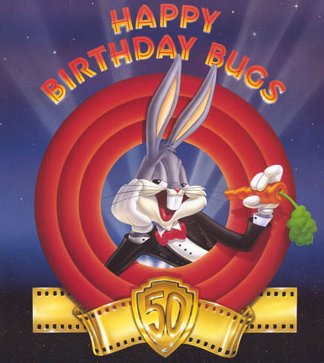
I'm not sure the 50th anniversary of Bugs Bunny played a crucial role in the series' conception. But I wasn't working for Warner Bros. at the time. Perhaps they were looking for a way to celebrate Bugs's birthday, and this was part of it.
Anyway, once Steven and Terry agreed to let Jean MacCurdy explore the possibility of making "Tiny Tunes" as an in-house Warner Bros. Animation production, she called me up at Hanna-Barbera, and offered me the job to join her at Warners to head up the creative team on the production. The next day, I asked Bill Hanna and Joe Barbera if they would let me out of my contract. (I was starting work on the second season of "A Pup Named Scooby Doo" at the time.) I wanted the chance to work with Steven and at Warners, so they let me go. I was packed up and out of there by the end of the day.
The next day, I started working at Warners. My first hires were Alfred Gimeno and Ken Boyer, both of whom started drawing up characters.
I had my first meeting with Steven on the following day, and we went over characters, concepts and stories. Jean was there too. It was that first meeting when we came up with Acme Looniversity and Acme Acres as the settings. The name was changed to Tiny "Toons." We reviewed what characters would be involved (junior versions of the classic Looney Tunes), but none of the names were figured out yet. Babs was the first character added to the mix. Elmyra's name came from the first name of my next door neighbor.
After that meeting, with more to go on, I hired Wayne Kaatz, Tom Minton, Eddie Fitzgerald and a few other writers to start exploring the characters and the story concepts. Jim Reardon came on early, and Wayne Kaatz recommended a friend of his, Sherri Stoner, who came on board just after we finished series development and started actually writing our first scripts. By then, Jean and I had hired our unit directors, who included Art Vitello, Art Leonardi, Eddie Fitzgerald and Ken Boyer.
Tiny Toons had an extremely large cast of characters, and when I say large you know I mean it--it practically rivals The Simpsons as far as cast size. Of course, part of that is from the fact that you had to come up with junior versions of just about everybody.
The cast was so big that some characters barely got time at all. Barky Marky comes to mind--it became a running gag on the show itself that he was never used. Then there's Mary Melody--her only job in all her appearances was just to show up and stand there. She made a remark about this fairly early on--"another cameo, another paycheck," so it seems like it was planned, which sounds odd, but you know the truth.....
We liked the name "Mary Melody." She was a very late add to the mix, and didn't receive any character development. She basically filled the role of "Nice Generic Human Girl," and we used her when we needed a sympathetic and warm human character...as opposed to Montana Max and Elmyra, who oozed very limited sympathy. When Babs and Fifi and Shirley the Loon came into better focus and could carry a great deal of the feminine appeal of the show, we had very little need for Mary Melody.
Can you please put an end to the rumor that Mary Melody is based on So White from the banned Warner Bros. cartoon "Coal Black and de Sebben Dwarfs"? I very much doubt this is true and many internet sites on Tiny Toons have printed it as fact.
No, she wasn't.
Thank you!
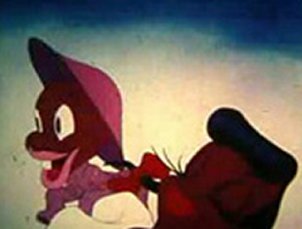
The resemblance is just coincidental, people. Move on!
Were there any characters that were designed for Tiny Toons but ultimately cut out of the final production?
Since we were doing junior versions of the classic characters, it was a fairly straight-forward process. We didn't spend too much time working on characters that we had no intention of using. Montana Max, our variation on Yosemite Sam, was one of the toughest to complete. Steven finally had us come over to Amblin to screen "Tobacco Road," a 40's movie with a real hicky, goofy son in it. That character's teeth made it into Montana Max's final design.
We had younger versions of other classic characters...Barky Marky was our junior version of Marc Anthony, and as you mentioned, he made it into very few cartoons. Chuck Jones was not particularly enthusiastic for us to use too much of the characters he felt that he had created. So there was never a lot of Little Beeper and Calamity, or Barky. We felt more justified using Fifi, since she was a girl character, as opposed to Pepe.
Not every Tiny Toon was based on a Looney Tunes character. What was the thinking behind adding a character based on Shirley MacLaine, or one based on Arnold Schwarzenegger? (Though Arnold the Pit Bull was kind of based more on Hanz and Franz from SNL...)
At that time, in the news, the pit bull had become well-known as a fierce breed, and we wanted to establish a sizable heavy for Furrball, so we went with the pit bull. The Arnold voice was provided by Rob Paulsen, who was our utility infielder on Tiny Toons, and was to become one of the big voice stars on Animaniacs. Of course, the pit bull evolved and appeared as a heavy in other cartoons featuring other Tiny Toon characters.
As for Shirley, we wanted Plucky to have a female counterpart, and we wanted her to be quirky and strange, so the New Age movement lent itself to her character development. Gail Matthias provided Shirley's voice with her definitive "Valley Girl" voice which she created and used on Saturday Night Live. Gail was the first and best at the Valley Girl sound, and we were very fortunate to land her in the role. In the drawings for Shirley, I pushed for a loon design...which we didn't really achieve. But the loon name stuck, and Shirley the Loon, as a name, matched up with her New Age persona.
Someone's made the claim that this drawing is an early version of Shirley. Is it?
Yes, she was an early design for Shirley the Loon, and I recall preferring this design. I think Steven preferred the other one, which we used. We had trouble getting some of the designs through, so when he liked one, we went with it.
An even bigger problem was getting the names cleared through the legal department. "Plucky" was probably the twelfth name we tried to get clearance on for the duck. The cat's name took forever. Maybe the twentieth name. It got so desperate I wanted to kill the cat off...or name it LEUKEMEOW and get rid of it in the second episode.
What were some of the abandoned names you remember, and would you have preferred some of them?
As I mentioned before, when I first arrived, there was one drawing representing the show: a cute boy rabbit, the Bugs junior character, drawn by Mitch Schauer. Looking out of the rings. If you can believe it...they were calling this character Bitsy. This name made me cringe and I immediately started introducing new names for him...I have a thick file on all the names we went through for all the characters. I'll dig it out some day, but not in the near future -- too much going on right now.
I can tell you that Babs was "Babs" from the first drawing we did of her. It jumped out as her name and it stuck. There was something cheeky about the name and the character. Plucky and Hamton went through massive name changes until we found the ones that were greenlit. We were writing scripts for them and recording them before we came up with their final names.
What about this one character I've heard was created, but tossed during production...Lightning Rodriguez, the Tiny Toons equivalent of Speedy? Was he nixed because of ethnic sensibilities?
That name never made it very far. I think it was jotted in as a possibility only. We already had a fast character in Little Beeper, so having a young Speedy wasn't a high priority. The 50's and 60's Speedy Gonzalez cartoons were already encountering some trouble (criticism) as far as the characters' ethnicity goes, and we were not about to create any problems for ourselves. A Latino character was certainly viable, but we weren't in the market to create any ethnic sterotypes, especially potentially negative ones.
Who came up with the idea for the joke credit? I loved those things. If I ever have my own show, this is one idea I'm going to......borrow.
Blame me. I loved gag/joke credits ever since seeing "Monty Python and the Holy Grail." My favorite joke credits -- and certainly the most elaborate set of them -- were contained in Tiny Toons' "How I Spent My Summer Vacation." I wrote all the joke credits on that and all the other shows. The end ring sign-offs were also something I planned from the outset to make the show special and keep everyone watching through the end titles. I wrote all those sign-offs, too. As well as the ones on "Animaniacs" and "Freakazoid." (Emmitt Nervend, in "Freak," was also my idea, sort of our "Where's Waldo" character, but his design was drawn by Mitch Schauer. Mitch made sure Emmitt showed a few times in each episode, at least through the first season).
We had a nice long lead time on Tiny Toons, so there was a bit of time at the end to write and insert the joke credits. By the time we were wrapping up the first batch of "Animaniacs," the broadcast premiere was looming, and I had less time to spend on the gag credits. So, we just gave Kathy Page, my assistant, a different job on each show...like raccoonnookkeeper, and many many others.
Which TT script was the first ever written? And who wrote it?
First written and recorded "Tiny Toons" episode was the very bizarre half-hour story that feels more like three shorts...each act was handled by a different crew. "Hare Today, Gone Tomorrow." Episode #18 in the line-up. Kennedy Cartoons did the animation. It would've played earlier in the line-up, but the retakes took a long while to arrive. It's the big "Elmyra and the rabbits" intro episode. Written by me, Wayne Kaatz, Charlie Howell, Gordon Bressack, and Debra Blanchard...Eddie Fitzgerald directed a section, Ken Boyer another, and Eddie and his crew handled the third. One part of Eddie's section is the Martian fantasy part, and if I recall correctly, he rewrote a good portion of that segment.
The first one to AIR (on CBS, in prime time) was "The Looney Beginning," an "origin" story where Buster and Babs are in an animator's office after hours and create the whole show themselves (which is out of continuity with the rest of the series, but a cute idea anyway).
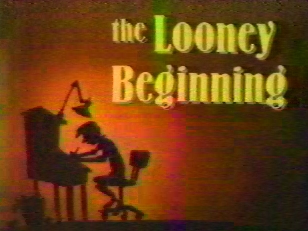
I think The Looney Beginning was somewhere around episode 37. Number 37 means that it was the 37th half hour script to have been written and completed. Sherri and Paul and I wrote the script, and with Steven's notes, I rewrote it (uncredited).
Steven wanted the "animation studio scenes" in the pilot to be live action, and he wanted lots of "Out of the Inkwell"/"Roger Rabbit" scenes with live action and animated characters interacting. But the late production start date on this episode prevented any of the live action from happening. As it turns out, we were lucky to get the animated version on the air in time.
This is the episode that, for a number of reasons, sent Glen Kennedy running for the hills. Before completing the animation, I believe Glen discovered that Steven wasn't crazy about some of Glen's animation, and it caused quite a riff. We had to get Dave Marshall, James Wang and the crew at Cuckoo's Nest to take over and redo tons of unusable footage. I remember sitting in the Sherman Oaks animation office on Saturday and Sunday, 12 days before the premiere, redrawing half of the show's storyboard and the corresponding layouts with Rich Arons, Alfred Gimeno and others. Somehow, we got those new layouts to Dave Marshall and his crew and got the new footage in record time. (This was back in '89, before digital fixes could be made at the last moment.) We scored and mixed the show a few days before the premiere with rough footage, and we were still cutting in retakes on air-date.
How did you go about selecting the voices for the characters? There were a lot of roles to fill, and you couldn't exactly rely on Mel Blanc anymore...
The process went like this: We wrote up sample dialog, called "sides," for each character and sent the sides to the top voice talent agencies in town. These agencies shared the sides with key clients, who were booked into audition sessions. Some agents also sent us voice tapes, to help their clients get auditions. If we heard something good on the tapes, we'd make sure we auditioned that actor.
Tiny Toons casting was a long and arduous process. Andrea Romano and I conducted all the auditions. The easiest role to cast was Babs...because Tress was so talented and right for the role. Others tried out for Babs, but Tress locked it up pretty quickly. Frank Welker was always on hand for key animal roles, like Furrball and Barky Marky. We counted on him to provide his famous "bubble" voice for Gogo Dodo as well. Maurice LaMarche also did a bubble voice for Dizzy, but it was a rougher version, less clean than Frank's.
We auditioned (and recorded) lots of different actors for each role, then listened to all the auditions by character. We cut the list of our favorites for each role down to 3 or 4 or 5 actors, depending on how well the auditions went. Then we shared those tapes of the finalists with Steven and the staff at Amblin. In almost every case, our favorite was their favorite. That's how we got the cast that included Don Messick as Hampton, Joe Alaskey as Plucky, Candi Milo as Sweetie, Cree Summer as Elmyra and all the rest. Cree was a great catch, because she simply brought her own natural comic dementia to the role...she wasn't trying to do anything "Elmery" at all.
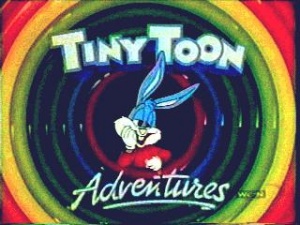
I've heard of problems with Buster that lasted beyond casting...
Buster was the toughest role to cast, and the last one to be cast. Steven wanted to recast it about 5 episodes into the recording of the series, but Andrea and I fought to keep Charlie Adler in the role. That may not have been the best choice, but we both knew there was a lot of work to be done, and re-recording eps one-through-five was not our goal. Charlie settled in for a while, and brought a lot of energy to the recording sessions, but his voice got sort of screechy and over the top at times, and it was a daily challenge to keep him consistent in the role.
Later, when we were casting Animaniacs, Charlie didn't land a regular role on the series. In response to this, Charlie and his agent sent out angry letters of resignation to Steven and others. In the letters, he stated that Andrea and I had treated him shabbily on Tiny Toons, and therefore, he would no longer work on Tiny Toons in the role of Buster. Of course, by that time, we only had a handful of Tiny Toons to complete, so we had to find another actor to take on the role.
Both Andrea and I felt pretty betrayed by Charlie for dissing us in the letter -- which I never saw...I just heard about. We had fought to keep him in the Buster role, and for our efforts, he ultimately sent out letters saying that we were lousy, etc.
At the same time, Joe Alaskey (Plucky) quit for other reasons -- of the financial kind. The money issue was resolved, so Joe returned. But Charley's resignation letters were final, and we had to recast.
Joe Alaskey also claimed to have a problem with Andrea. He felt she treated him differently than some of the other actors -- I cannot verify this. Joe could be temperamental, and Andrea was just trying to get the job done, and done well. Anyway, Joe's complaints about Andrea hurt her, and after that, Andrea often avoided directing Joe Alaskey in voice sessions.
Tiny Toons was also the first cartoon show in a long time to have a fully orchestrated score. (And what an orchestra it was--it could mimic anything almost perfectly, from ancient 1920's shorts to Sinead O' Connor's "Nothing Compares To You".) Orchestra soundtracks were rare then, and they're even rarer now--mainly, I've heard, because they've always been too expensive for what production companies are willing to pay.
It's a shame because I think music done right can really enhance a cartoon more than people think--though today's mixing tools can come pretty close to orchestras these days. What's the story behind the orchestra, and how were they able to keep it in the kids' TV budget for nearly an entire decade?
In the earliest meetings I had with Steven, we talked about what we liked in cartoons, and what we liked about Looney Tunes, and one of the elements that came up was the Carl Stalling music. I knew it would be crucial to capture the essence of that music if we were to truly recapture the spirit of those great cartoons. Steven, without blinking, said (I'm paraphrasing) that, naturally, we would have a full orchestra score each episode. I couldn't have been happier to hear that. Steven stuck to his guns on this...Warner Bros. was not expecting this wrinkle -- they thought they'd be librarying the music. Jean MacCurdy brought in Doug Frank from the TV music department, and together they figured out how to finance the scores. It cost a fortune...60 grand per half hour in many cases. But man, those babies sounded good.
You've mentioned a lot of your staff, but you have yet to mention two of the greatest hires to ever happen to animation in my opinion -- Bruce W. Timm and Paul Dini. What they and Eric Radomski became famous for wasn't Tiny Toons, but they did write a few scripts for it....
Yes, they are both incredibly talented people. We were very lucky to have them on staff. Bruce Timm was hired in 1989 by Art Vitello, who was the first director that Jean and I hired for the Tiny Toons series. Art hired Bruce to do storyboards for his Tiny Toons unit. The other board artists he hired: Keith Baxter and Doug McCarthy, both major talents. Art had one heckuva crew.
Timm and Radomski should be credited for creating the look of the series. The tone. They personally made the short pilot/sample film that started it all. They also pushed for the show to go into serious and dark areas. They had a true vision for it.
Sean Derek was the first story editor, and short-lived. She and Bruce clashed almost instantly. Fox didn't like the first series bible, so I rewrote the bible, which placated the internet for a while. Alan Burnett came on after Sean. Paul Dini joined up about that time as well.
Paul and Bruce and Eric were instrumental in making Batman a great show. And Alan Burnett might deserve as much credit as Paul, although Alan's humility would prevent him from saying so. There are also some incredible episode directors and artists like Ronny Del Carman and many others whose contributions should not be overlooked.
How long did they work with Tiny Toons before their attention went to superheroes?
Both Paul and Bruce worked full time on Tiny Toons for the first two seasons. At that point, Jean knew there was interest in a Batman animated series on the lot, and Bruce and Eric both showed interest to pursue it, so she let them run with it. Now, there's a smart move by an exec!
I'd known Paul Dini for years. Since 1980. We had worked side by side at Filmation (in lovely Reseda, CA) and we'd been pals ever since. He even attended my wedding back east in '81. He had been working up north at Lucasfilm on the Droids animated series while I was at H-B. He did a few freelance "Scoobys" for me. When I went over to Warners to make Tiny Toons, I kept calling him to join us, and after a few months he finally came down and never left.
Paul (recently married to Misty) remains a great friend and one of the best writers in the business. And a genuinely nice guy. Unlike many creative people in this world, Paul can appreciate the good creative work of others and actually offer up kind and enthusiastic comments about that work. I've always admired that about him.
Whenever I can get Ruegger again (which may be next month or next year, depending) the interview will continue with Tiny Toons' best episodes. Or I may just skip ahead and make it about Freakazoid, because I have a ton of questions regarding that series that I've been absolutely burning to ask. (What would you readers prefer? Let me know.) Whatever it ends up looking like, stay tuned--and remember, comedy in the wrong hands is a dangerous weapon.
RETURN TO THE MAIN PAGE
OR,
CHECK OUT THIS TV GUIDE SPIELBERG INTERVIEW FROM '95...